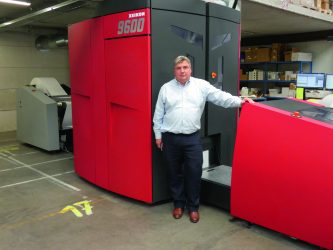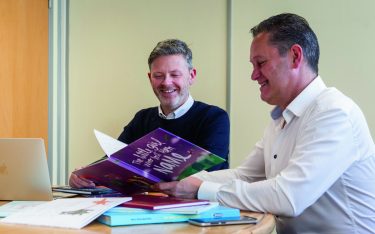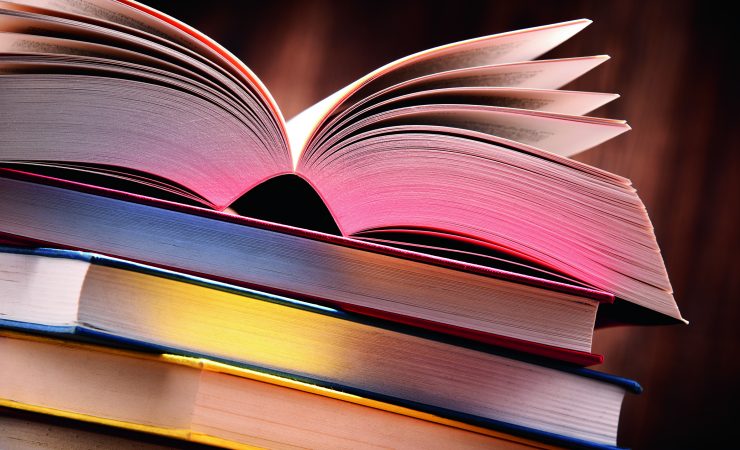Existing trends in book production towards shorter runs and on-demand production have only been amplified by the pandemic. Michael Walker spoke to printers who are meeting the changing demand
Lockdown furloughs gave some people more time to read and many who were still working were perhaps glad to look at something that wasn’t a screen for a change, so books fit the bill. They can also be beautiful objects in their own right, which is part of what motivates Luc Peeters of the eponymous Drukkerij Peeters in Leuven, Belgium. The current owner of the fifth-generation family business, founded in 1854 as an academic printer, publisher and bookseller, was initially sceptical about digital printing, saying, ‘I was offended by the quality of print-on-demand poor print, even in mono text, and binding, the spines were not good. We try to make nice books, with different papers and sizes.’
However, he’s subsequently proved that with care and good practice, digital can match and his view surpass offset quality. Starting with Konica Minolta BizHub 2250 and 1100 sheet-fed toner presses around 2015, he was quickly able to show his suppliers that their machines could do better than what was often being accepted elsewhere. ‘We can achieve quality for short runs. Digital has changed in the last four or five years and is more stable for short runs than litho is.’ The KM fleet has been updated with the addition in July
2020 of an AccurioPress C12000 but the real volume capability comes from a Xeikon 9600 web press installed in September 2019. Mr Peeters says the sheet-fed line, which has a Risetec three-knife trimmer and perfect binder inline, is theoretically capable of up to 300 books per hour, but that is seldom achieved, while the web-fed Xeikon with Hunkeler paper handling and near-line finishing, and Horizon inline finishing, can hit 500 per hour. Books for prolonged reference use such as academic titles, are sewn with Meccanotecnica machines on both lines.
‘Sheet-fed was great but not fast enough for 400, 500 or 800-runs,’ he explains. By comparison, the Xeikon has ‘enabled the replacement of offset’, with the firm’s last litho press being sold in 2019. The Xeikon was chosen because it was dry toner technology, which meant no paper limitations. ‘It’s not the fastest but we needed a secure line that we could leave running overnight for 10 hours; now we run only one shift, from 6am to 6pm.’
The Covid impact saw an initial drop in business at Peeters but demand has since accelerated. ‘People can’t travel now, but they can travel in their minds,’ as he puts it. Prior to the pandemic, Mr Peeters was considering installing a second Xeikon 9800 for capacity and redundancy, but that decision is now on hold pending developments.

Luc Peeters with the Xeikon 9600
This time it’s personal
Fully personalised books are a key part of the production workflow at Charlesworth Press in Wakefield, where HP Indigo presses are used to print a series of children’s books for publishers that include Wonderbly, Hooray Heroes and Mrs Wordsmith. One of the best-known examples is Wonderbly’s I Lost My Name, a picture book in which the child’s name is spelled out during the story. According to group managing director Mark Grey, the project came together through networking at HP events, where the people with the publishing idea were looking for a printer. He explainins, ‘Wonderbly worked out the pagination, the frequency of the letters and built spreads to maximise the number of letters; the books are priced on the average number of pages per book.’
The idea appeared on BBC’s Dragons’ Den and took off in its first year. More than five million books have been printed and Mr Grey says that Charlesworth’s business has grown alongside, with the print company now supplying all over the world, via Royal Mail’s distribution network.
The press fleet pre-dates the personalised work and as well as an SRA3 Indigo 7800, there are two B2 12000s, upgraded from the Indigo 10000 specification, though not including the high definition option that HP introduced with the 12000. Operations director Lee Hewitt explains that Charlesworth uses a home-grown workflow system, having found that HP’s OneFlow had some restrictions around non-Roman alphabets. The system is based on hot folders and files that come in ‘don’t touch the sides’. Mr Gray says that they normally get 24 hours’ notice of work that’s coming in, and can scale up at 12 hours’ notice to meet seasonal peaks such as Mother’s and Father’s days. PDFs are downloaded from customers’ servers, barcoded for finishing and batch printed on the Indigos.
Finishing is handled on Horizon binders and Kolbus casemaking equipment and Charlesworth has more recently added a Müller Martini InfiniTrim that can also handle end papering inline to the binder – thought to be a first in the UK – and can feed up to four binding machines. This provides capacity up to 36,000 books a day, whether that’s coming collated from the Indigos or as folded signatures from the company’s litho presses.

Lee Hewitt (L) and Mark Gray of Charlesworth Press grew their business through personalised children’s books
Nice work if you can get it
Northampton-based Twenty-10 Digital has both HP Indigo 5000 and Ricoh Pro C7100Sx digital presses, plus a variety of Morgana finishing equipment. The company also has wideformat capability, with a Mimaki CJV150 roll-fed solvent printer and Vivid laminator, used for retail and signage work.
Twenty-10’s book work is a mix, ranging from 700page PUR-bound annual publications for academic and institutional publishers, corporate literature and brochures to notebooks for retail clients. Both digital presses are used, with the Ricoh’s long sheet capability being useful for covers, while for mono-only inners, the Indigo offers a lower production cost. Binding is handled on a six-year-old Morgana DigiBook 200 PUR binder that’s still going strong.
For quality colour work, managing director Paul Riley says he still prefers the Indigo, especially when printing on uncoated stocks. ‘We push the uncoated and people go ‘wow’,’ he says, adding that the solids and gradients ‘are fantastic’. Jobs done on the liquid toner press include those for Royal Ascot and The National Gallery – ‘nice stuff’, as he puts it.
Against that, the Ricoh press supports additional colours, with white and clear being used regularly, though the fluorescent pink toner has found fewer applications so far. A new agency client working for a brand with a pink logo might be about to change that, however.
Like many, Twenty-10 has experienced a downturn through the lockdown period and had to use the government’s Coronavirus Job Retention Scheme, but is now bringing furloughed staff back and is on a sound financial footing. Mr Riley has seen things pick up since people were allowed to go back to work and has had a couple of new client wins, though he anticipates that the bigger runs aren’t coming back and the work levels won’t get back to more than 80% of what used to be normal for some time. ‘We’re coming through,’ he concludes.
Amen to that.





